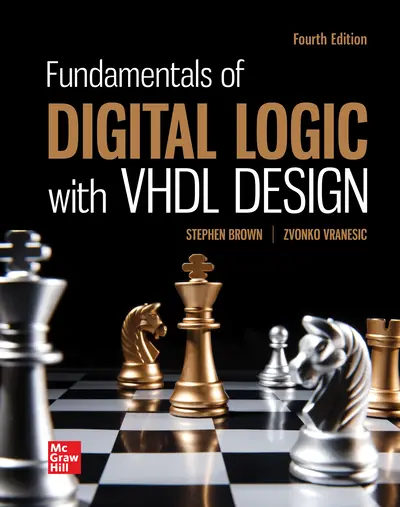
Orders within the United States are shipped via FedEx or UPS Ground. For shipments to locations outside of the U.S., only standard shipping is available. All shipping options assume the product is available and that processing an order takes 24 to 48 hours prior to shipping.
View PriceNote: Connect can only be used if assigned by your instructor.
Learn more about Connect >Orders within the United States are shipped via FedEx or UPS Ground. For shipments to locations outside of the U.S., only standard shipping is available. All shipping options assume the product is available and that processing an order takes 24 to 48 hours prior to shipping.
View Price Note: GO can only be used if assigned by your instructor. Learn more about GO* The estimated amount of time this product will be on the market is based on a number of factors, including faculty input to instructional design and the prior revision cycle and updates to academic research-which typically results in a revision cycle ranging from every two to four years for this product. Pricing subject to change at any time.
Quick Actions (Only for Validated Instructor Accounts):
Request an Ebook Sample Request a Print Sample Contact a RepFundamentals of Digital Logic with VHDL Design is intended for an introductory course in digital logic design, which is a basic course in most electrical and computer engineering programs. A successful designer of digital logic circuits needs a good understanding of the classical methods of logic design and a firm grasp of the modern design approach that relies on computer-aided design (CAD) tools. The main goals of this book are to teach students the fundamental concepts of classical manual digital design and to illustrate clearly the way in which digital circuits are designed today, using CAD tools.
This title will be available in Connect. Its Connect shell consists of the MHeBook, Tegrity, Proctorio, and the ability to add your own questions. It does not have SmartBook or assessment in the question banks.
1 Introduction
2 Introduction to Logic Circuits
3 Number Representation and Arithmetic Circuits
4 Combinational-Circuit Building Blocks
5 Flip-Flops, Registers, and Counters
6 Synchronous Sequential Circuits
7 Digital System Design
8 Optimized Implementation of Logic Functions
9 Asynchronous Sequential Circuits
10 Computer Aided Design Tools
11 Testing of Logic Circuits
Stephen Brown
Stephen Brown received the Ph.D. and M.A.Sc. degrees in Electrical Engineering from the University of Toronto, and his B.A.Sc. degree in Electrical Engineering from the University of New Brunswick. He joined the University of Toronto faculty in 1992, where he is now a Professor in the Department of Electrical & Computer Engineering. He is also the Director of FPGA Academic Programs for Intel Corporation.
His research interests include field-programmable VLSI technology, CAD algorithms, computer architecture, and applications of machine learning. He won the Canadian Natural Sciences and Engineering Research Council’s 1992 Doctoral Prize for the best Ph.D. thesis in Canada, and the New Brunswick Governor-General’s 1985 award for the highest academic standing in the Faculty of Engineering. He is a coauthor of more than 150 scientific research papers and two other textbooks: Fundamentals of Digital Logic with Verilog Design and Field-Programmable Gate Arrays.
He has won many awards for excellence in teaching electrical engineering, computer engineering, and computer science courses.
Zvonko Vranesic
Zvonko Vranesic received his B.A.Sc., M.A.Sc., and Ph.D. degrees, all in Electrical Engineering, from the University of Toronto. From 1963 to 1965 he worked as a design engineer with the Northern Electric Co. Ltd. in Bramalea, Ontario. In 1968 he joined the University of Toronto, where he is now a Professor Emeritus in the Department of Electrical & Computer Engineering. During the 1978–79 academic year, he was a Senior Visitor at the University of Cambridge, England, and during 1984–85 he was at the University of Paris, 6. From 1995 to 2000 he served as Chair of the Division of Engineering Science at the University of Toronto.
He is a coauthor of four other books: Computer Organization and Embedded Systems, 6th ed.; Fundamentals of Digital Logic with Verilog Design, 3rd ed.; Microcomputer Structures; and Field-Programmable Gate Arrays. In 1990, he received the Wighton Fellowship for “innovative and distinctive contributions to undergraduate laboratory instruction.”
In 2004, he received the Faculty Teaching Award from the Faculty of Applied Science and Engineering at the University of Toronto. He has represented Canada in numerous chess competitions. He holds the title of International Master.